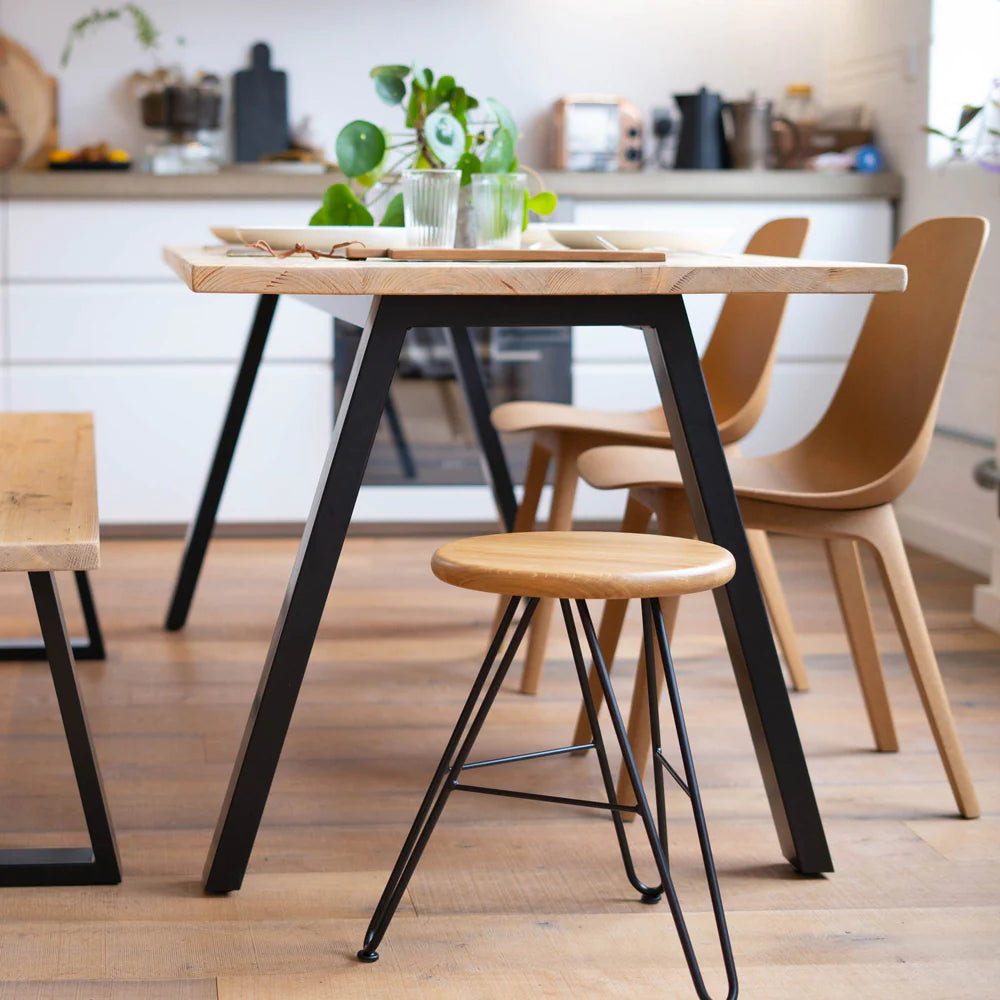The Ultimate Overview to Selecting Long Lasting Dining Room Table Legs
The Ultimate Overview to Selecting Long Lasting Dining Room Table Legs
Blog Article
An In-depth Look at Dining Table Leg Styles: Locating the Suitable Match
Selecting the appropriate table leg design is essential for both aesthetic allure and functional performance. Traditional 4 legs use ageless elegance and security, while the pedestal base provides boosted legroom and a contemporary look. For those with bigger tables, trestle legs guarantee sturdy assistance, whereas hairpin legs present a mid-century modern-day vibe with their minimalist design. The x-shaped legs mix contemporary design with improved security. Each of these choices brings unique advantages, making the choice greater than just an issue of preference. Discover even more to uncover which style flawlessly complements your eating space and way of life.
Conventional 4 Legs
Amongst the numerous kinds of dining table leg styles, the standard four-leg style continues to be a classic choice for numerous homes. This traditional setup supplies an unified mix of capability and aesthetics, making it a perennial favorite. Four legs provide balanced support, ensuring the table remains stable and capable of bearing substantial weight. This is particularly beneficial for households that frequently host large gatherings or use their eating table for numerous objectives, such as job or crafting.
From a visual point of view, the standard four-leg design can be quickly adjusted to different interior styles. Whether crafted from timber, steel, or a mix of products, these legs can be elaborately carved, streamlined and minimalistic, or anything in between. Their convenience enables them to match both rustic and modern setups seamlessly.
Furthermore, the simple framework of the four-leg layout facilitates ease of movement and positioning within a room. Unlike even more complicated bases, this design lessens obstructions, giving sufficient legroom for restaurants. In summary, the traditional four-leg table leg style weds enduring style with sensible functionality, making it a sharp choice for those seeking both kind and function in their eating furniture.
Stand Base
Typically celebrated for its sophisticated and space-efficient design, the pedestal base is a notable option to the typical four-leg setup in table leg styles. This unique base typically features a solitary central column supporting the table top, which can vary in type, from ornately sculpted timber to smooth, modern-day metal. One of the key benefits of the pedestal base is its capability to maximize legroom and seating versatility. Without edge legs, restaurants are afforded higher flexibility of activity, making it a perfect option for round and oblong tables that advertise more intimate and inclusive events.
The central column itself supplies a canvas for complex designs and imaginative expressions, including an element of aesthetic rate of interest beneath the table. In recap, the pedestal base incorporates capability with style, making it an improved and functional option for varied dining settings.
Trestle Legs
Trestle legs offer a durable and ageless foundation for eating tables, characterized by their straight cross-bracing and sturdy assistance beams. Stemming from medieval have a peek here times, this layout has advanced yet kept its vital framework, making it a perennial fave in both conventional and modern settings. The main trestle beam, commonly supported by 2 or more upright blog posts, uses extraordinary security, enabling for bigger table sizes without the requirement for added legs.
A considerable benefit of trestle leg tables is the sufficient legroom they use. Unlike tables with four corner legs, the absence of obstructions at the table's sides gives unblocked area for chairs and restaurants, improving convenience and ease of access. This makes trestle tables optimal for fitting bigger gatherings, whether in an eating area or a banquet hall.
From rustic farmhouse to sleek modern designs, trestle legs can be customized to suit individual tastes. Their enduring appeal and functional benefits make trestle legs a compelling choice for those looking for both design and usefulness in their eating table.
Barrette Legs

The allure of hairpin legs hinges on their simpleness and versatility - dining room table legs. Offered in a series of materials, including steel and brass, they can be completed in countless colors to match various indoor styles. Whether coupled with a rustic wood table top or a contemporary glass surface, hairpin legs easily mix capability with a touch of vintage beauty
Longevity is one more significant attribute of barrette legs. Despite their delicate look, these legs are crafted to birth substantial weight, guaranteeing the dining table stays secure and safe and secure. Additionally, they are relatively easy to set up, making them a prominent option for do it yourself lovers and specialist furnishings manufacturers alike.
X-Shaped Legs

Constructed from materials such as steel, wood, or a combination of both, X-shaped legs can be customized to match numerous layout preferences. Steel legs frequently provide a smooth and commercial feeling, ideal for loft-style apartments and contemporary dining areas.
Additionally, the design behind X-shaped legs ensures even weight distribution, lessening the danger of tottering and improving durability. This makes them particularly well-suited for larger table that need extra support. Fundamentally, X-shaped legs blend useful engineering with contemporary appearances, making them a classic selection for varied dining atmospheres.
Verdict
An extensive understanding of table leg designs exposes the distinctive features and advantages of each layout. Typical 4 legs use stability and timeless appeal, while stand bases give legroom and a structured appearance. Trestle legs guarantee robust assistance for bigger tables, and hairpin legs introduce a mid-century modern-day visual. X-shaped legs integrate contemporary layout with improved stability. Selecting the ideal leg design guarantees both functional and visual fulfillment in any type of dining room.
Report this page